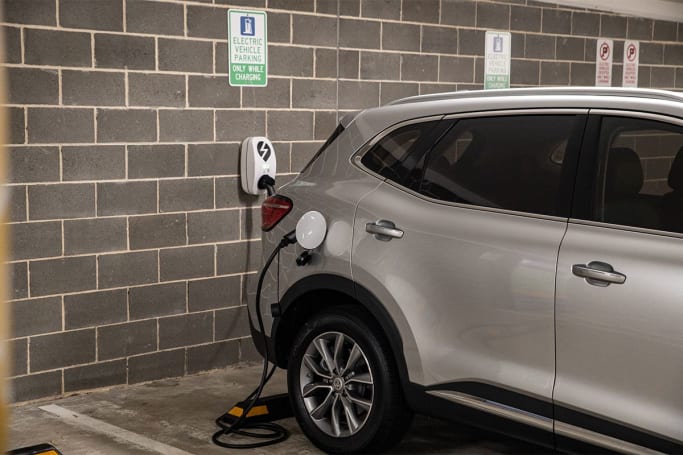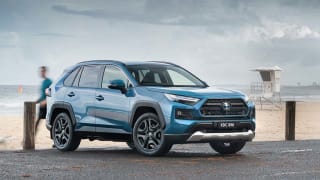MG now calls its plug-in hybrid cars +EV. It says this is to help demystify the technology, by showing it’s essentially a combustion vehicle, plus an electric vehicle component.
If you ask me, ‘plus EV’ is actually more confusing, but the point is this new version brings the price down once again.
This is because the plug-in version of the HS originally launched in 2021, only as the top-spec Essence. The Essence is still one of the most affordable plug-in hybrids you can buy in Australia, but the new mid-grade Excite trim we’re looking at for this review brings it down further.
Wearing a drive-away price-tag of $46,990, the strategy here is to offer the more expensive plug-in hybrid technology at the cost of a mid-grade self-charging hybrid RAV4.
Elsewhere the HS Excite competes with higher grades of the currently combustion-only Hyundai Tucson and Kia Sportage, but the big threat for this car will likely emerge in the form of the self-charging hybrid Haval H6 which launces in the coming months.
The HS is immediately impressive in terms of its raw numbers, though, with a massive 16.6kWh battery pack granting it a relatively long 63km purely electric driving range (although this is to the more lenient NEDC standard).

Aside from its electric features, there’s an appealing list of spec items included, with 17-inch alloy wheels, a 10.1-inch multimedia touchscreen with wired Apple CarPlay and Android Auto support, a 12.3-inch digital dash cluster, keyless entry with push-start ignition, six-way power seat adjust for the driver, heated front seats, dual-zone climate control, and a pretty good reversing camera.
What do you miss out on picking the more affordable Excite PHEV over the top-spec Essence? 18-inch alloys, a panoramic sunroof, improved seat trim, and, disappointingly, LED headlights. The Excite only ships with old-school halogen bulbs.
It’s also worth noting the hybrid RAV4s can be all-wheel drive at this price, while the +EV variants of the HS are front-drive only. Still, this mid-size SUV is one of the most affordable PHEVs on the market.






















